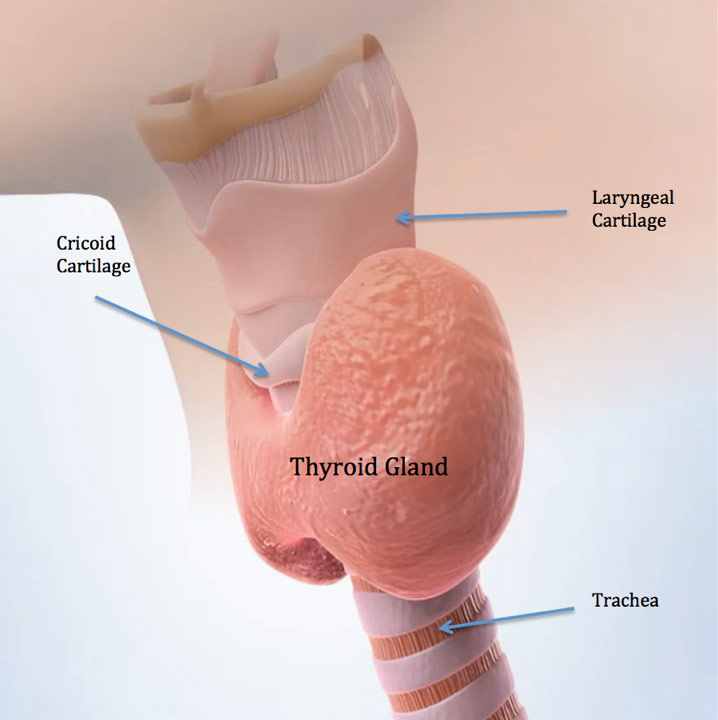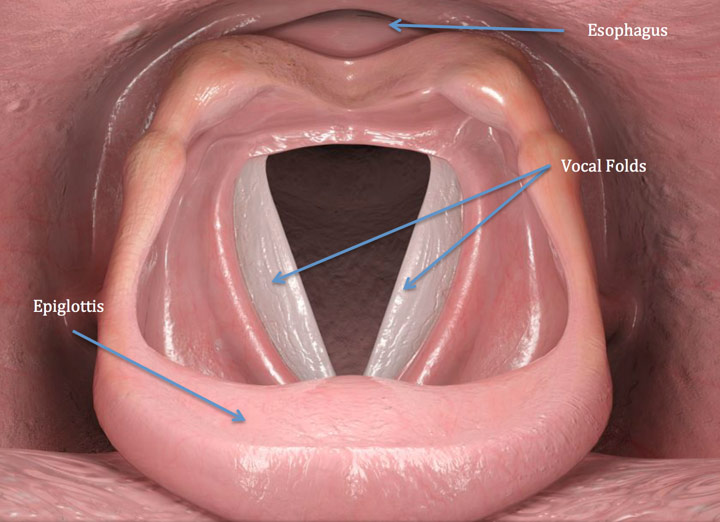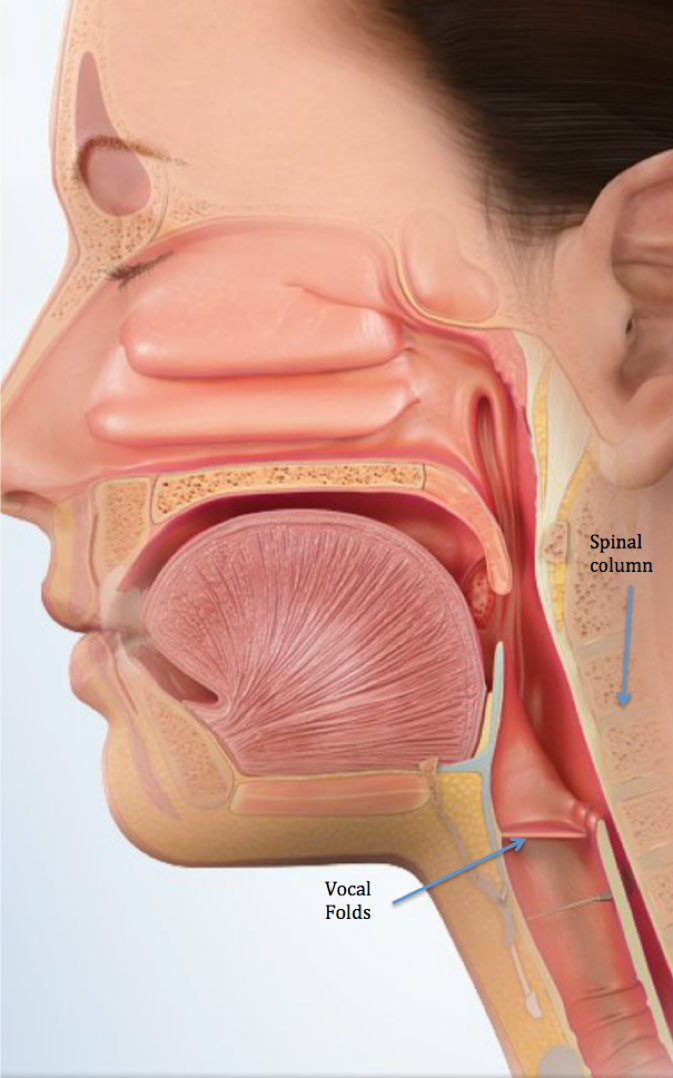Neck Injuries
Blunt injuries to the neck can have devastating effects as several vital structures either reside within the neck or pass through it. These structures can include: vessels that carry vital blood supply to the brain, nerves that supply vital functions of the body such as breathing, the spinal column that carries the spinal cord, and breathing and swallowing tubes that pass through the midline of the neck. Damage to any of these structures can be life threatening. Luckily, outside of spinal cord injury and laryngeal injury, these types of neck injuries are not too common during sporting events.
Anatomy
What is the larynx? Your larynx is the gateway to your breathing tube (the trachea). Your vocal folds are housed within the larynx and this is the area in which sound is produced for vocalization. Externally the larynx is made of several cartilages that can sustain trauma. Internally the structures of the larynx are lined with mucosa and trauma can lead to edema of the lining and blockage of the breathing pathway.

Figure 1: External structures of the larynx and breathing tube are seen. Two cartilages (laryngeal cartilage and cricoid cartilage) make up the external laryngeal structures. The laryngeal cartilage and cricoid cartilage can sustain fracture during a trauma. The thyroid gland lies just to the front of the trachea.

Figure 1: External structures of the larynx and breathing tube are seen. Two cartilages (laryngeal cartilage and cricoid cartilage) make up the external laryngeal structures. The laryngeal cartilage and cricoid cartilage can sustain fracture during a trauma. The thyroid gland lies just to the front of the trachea.

Figure 2: Internal view of the larynx. The vocal folds are located at the top of the windpipe (trachea). The epiglottis protects the windpipe from aspiration during eating and helps to direct food into the esophagus.

Figure 3. The relationship of the spinal column to the larynx is seen.
Diagnosis
How do I know what I have damaged?
If you sustained a trauma to your neck it is very important to be evaluated right away. Damage to the larynx can present in various ways. The patient may have no symptom, be slightly hoarse, or have difficulty breathing. This cannot wait and the patient will need to go to the emergency room right away. Usually a CT scan is done to see the extent of the damage but immediate surgery by specialists in the field of laryngeal trauma may be needed.
In most cases of damage to the spinal cord, the patient will have paralysis, numbness, or weakness of the body below the level of the damage. The neck will need to be stabilized right after the trauma. It is important not to move the neck until a physician has cleared the patient. The patient should be taken to the emergency room via paramedics. In the emergency room further workup will be performed to evaluate the extent of the damage.
Treatment
What can be done about trauma to the larynx?
After immediate stabilization of the airway the treatment for laryngeal trauma will depend mostly on the extent of the damage. Sometimes just careful observation is enough. At times the fractured cartilages will need to be placed together and secured with plates. At times the entire internal structure of the larynx will need to be re-constructed. This can be a long and arduous process that should be undertaken by specialists in laryngeal trauma.
What can be done about trauma to the cervical spine?
Treatment for trauma to the cervical spine depends largely on the symptoms, extent of injury, and level of injury. Usually high dose steroids are used to decrease swelling around the spinal cord while the surgeons perform surgery to decompress the segment of the nerve that is damaged. The cervical column is then typically fused together at the level of the injury and the patient needs to wear a special collar that prevents neck movement for several months. If any weakness or paralysis is noted, rehab will be necessary. Some functions may never return, others may only return partially.

